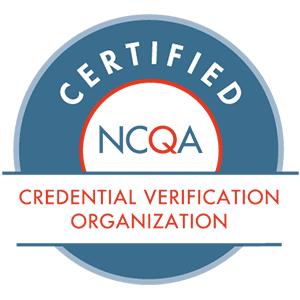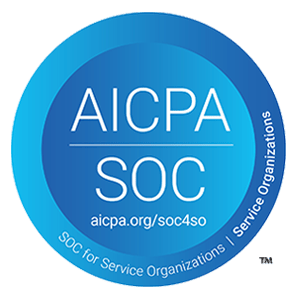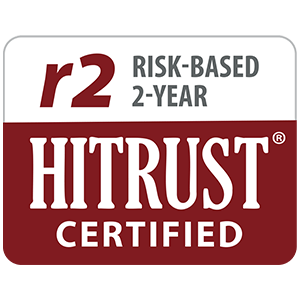Healthcare credentialing for licensed or certified clinicians has been a challenge for quite some time. Whether it’s obtaining the right information from state medical boards, keeping up with status changes, or tracking renewals and re-credentialing for so many clinicians, a gold standard for verification can be hard to fathom and follow in step with the organization’s policies and procedures.
Healthcare organizations are held accountable for care quality and regulatory compliance standards from accrediting authorities. We’ve collected the guidelines from some of the top healthcare accreditors to give a comprehensive view of ongoing monitoring of provider credentials, and primary source verification standards.
What are the main healthcare accreditation organizations for providers and health plans?
Historically, five major entities have maintained consistent control over quality standards for providers, payers, and numerous healthcare organizations.
- The Joint Commission (TJC)
- National Committee for Quality Assurance (NCQA)
- Utilization Review Accreditation Commission (URAC)
The organizations CARF and ACHC provide guidance and oversight for behavioral health and aging services such as home health or hospice care. These and other organizations, such as AAAHC, have similar standards to the big three we’ll focus on here. The important factors to remain compliant during routine audits and surveys for accreditation are having a good system in place to meet regulatory requirements and maintaining policies and procedures with routine documentation and communication.
Many organizations find fulfilling accreditation requirements to be a challenge and rely on numerous consulting firms, as well as Credential Verification Organizations (CVOs) to help them complete the standards of accreditation.
Healthcare Accreditation Organizations and Credentialing
The Joint Commission Credentialing Standards and Primary Source Verifications (PSV)
The Joint Commission (TJC) accredits and certifies more than 20,000 organizations and programs in the United States. Some of the facilities or healthcare organizations that seek TJC accreditation are children’s and rehabilitation hospitals, home care organizations, critical access hospitals, nursing homes, rehabilitation centers, behavioral health organizations, addictive services, ambulatory care providers, and clinical laboratories.
Compliance standards for licenses and credentials require each organization to fulfill proper screening and ongoing monitoring best practices, including verification upon hire and at the time of renewal.
The Joint Commission standards incorporate the six core competencies to guide the credentialing process:
- Patient Care
- Medical Knowledge
- Practice-based Learning and Improvement
- Interpersonal and Communication Skills
- Professionalism
- Systems-based Practice
The Joint Commission describes primary source verification as “Verification of an individual practitioner’s reported qualifications by the original source or an approved agent of that source. Methods for conducting primary source verification of credentials include direct correspondence, documented telephone verification, secure electronic verification from the original qualification source, or reports from credentials verification organizations (CVOs) that meet Joint Commission requirements.” According to TJC, Primary Source Verification (PSV) is required to confirm that an individual possesses a valid license, certification, or registration to practice a profession when required by law or regulation. It is the responsibility of the accredited organization to complete PSV, not the licensed individual.
NCQA Clinician Credentialing Standards
The National Committee for Quality Assurance (NCQA) measures the quality of medical providers and practices. They also provide accreditation programs to some of the largest health plans, ACOs, CVOs, and more.
What Clinician Documentation Must be Verified?
- Licensure
- DEA/CDS Certification (if applicable)
- Education/Training
- Board Certification
- Work History
- Malpractice History
- Sanction Information
- Application/Attestation Questions
NCQA Credential, Sanction, Education Verification Frequencies
Up to 180 Days:
- Licensure
- Malpractice History
- Board Certification
- Sanctions
Up to 365 Days:
- Work History
- Application/Attestation Questions
No Limits:
- Education
- DEA Registration/CDS Certification (if applicable)
URAC Primary Source Verification Standards
The Utilization Review Accreditation Commission (URAC) works with a variety of healthcare organizations such as health plans, telehealth companies, pharmacies, credential verification organizations, pharmacy benefit managers, and more.
Some state authorities recognize URAC accreditation as meeting certain state regulatory requirements instead of separate reporting to the state. A few states also require an accreditation from URAC for companies to do certain types of business.
When it comes to ongoing credentialing and license verification for health plans, URAC requires credentialing for all the practitioners who are participating providers in your network. URAC requires that your organization credential facilities, particularly acute inpatient, free-standing surgical centers, home health agencies, and skilled nursing facilities.
Primary source verification applies to clinicians and licensed and/or certified healthcare professionals to have their credentials evaluated upon hire and during re-credentialing- typically in three years. URAC in most situations requires that healthcare organizations also require clinical staff to notify the organization of any adverse changes in licensure or certification in a timely manner. Healthcare organizations must also implement policies in which to take appropriate corrective actions in the event a clinician has an impairment with their license or certification.
Comprehensive Credential Verification and Clinician Monitoring
A 2018 Physicians Foundation Survey indicated that providers typically see 18-21 patients per day and generate $1.5 million a year in net revenue to their affiliated hospital. With 10,000+ patient interactions per year, the traditional licensure verification performed only at “hire and during renewal” may no longer be sufficient.
Healthcare HR and Compliance professionals should have confidence that the frequency of license verification suffices to ensure that no individual is providing services with a renewal lapse or administrative action against their license at the time of care.
Many organizations do not have a centralized system for submitting, analyzing, syncing, and automating data processes for each provider to ensure license renewals and disciplinary actions don’t go unnoticed. HR and Compliance professionals are working in and out of many programs each day (HRIS, ATS, ERP, etc.) and need a reliable and efficient data flow to help support their daily tasks and employee management.
Leaders must have the ability to remove communication barriers and supply an environment for quick action and trust between all contributors in the credentialing, verification, and renewal process. Doing so will help with routine audits and surveys from the accreditation organizations, and ensure that the right people are delivering care for your organization.







